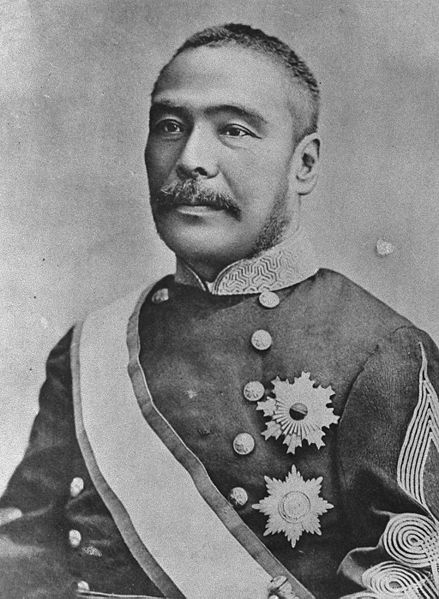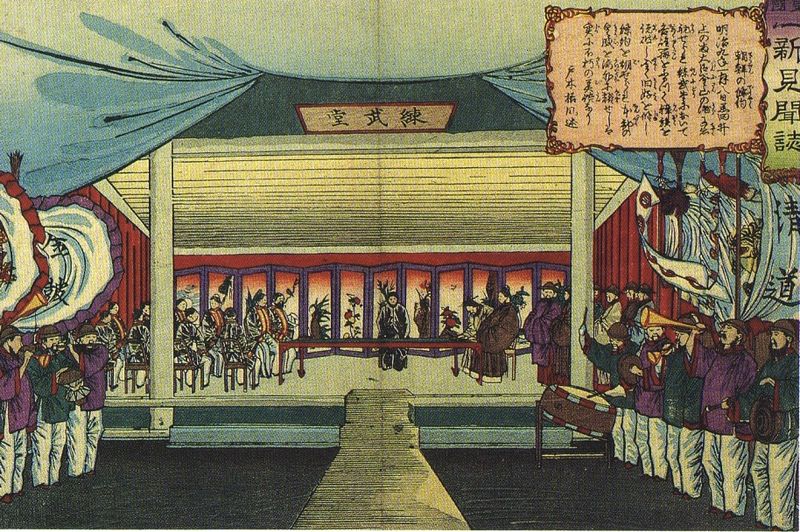<Back to Index>
- Geologist Giovanni Arduino, 1714
- Etcher Daniel Niklaus Chodowiecki, 1726
- Prime Minister of Japan Kuroda Kiyotaka, 1840
PAGE SPONSOR


Kuroda Kiyotaka (黑田 清隆, 16 October 1840 - 23 August 1900), also known as Kuroda Ryōsuke (黑田 了介), was a Japanese politician of the Meiji era. He was the second Prime Minister of Japan from 30 April 1888 to 25 October 1889.
Kuroda was born to a samurai class family serving the Shimazu daimyo of Kagoshima, Satsuma domain in Kyūshū.
In 1862, Kuroda was involved in the Namamugi Incident, in which Satsuma retainers killed a British national who refused to bow down to the daimyo's procession. This led to the Anglo - Satsuma War in 1863, in which Kuroda played an active role. Immediately after the war, he went to Edo where he studied gunnery.
Returning to Satsuma, Kuroda became an active member of the Satsuma - Chōshū joint effort to overthrow the Tokugawa shogunate. Later, as a military leader in the Boshin War, he became famous for sparing the life of Enomoto Takeaki, who had stood against Kuroda's army at the Battle of Hakodate. Under the new Meiji government, Kuroda became a pioneer diplomat to Karafuto, claimed by both Japan and Russia in
1870. Terrified of Russia's push eastward, Kuroda returned to Tokyo and
advocated quick development and settlement of Japan's northern frontier. In 1871 he traveled to Europe and the United States for five months, and upon returning to Japan in 1872, he was put in charge of colonization efforts in Hokkaidō. In 1874, Kuroda was named director of the Hokkaidō Colonization Office, and organized a colonist militia scheme to settle the island with unemployed ex-samurai and retired soldiers who would serve as both farmers and as a local militia. He was also promoted to lieutenant general in the Imperial Japanese Army. Kuroda invited agricultural experts from overseas countries with a similar climate to visit Hokkaidō, and to provide advice on what crops and production methods might be successful. Kuroda was dispatched as an envoy to Korea in 1875, and negotiated the Treaty of Ganghwa in 1876. In 1877, he was sent as part of the force to suppress the Satsuma Rebellion. In 1878, he became leader of Satsuma domain following the assassination of Ōkubo Toshimichi. Shortly
before he left office in Hokkaidō, Kuroda became the central figure in
the Hokkaidō Colonization Office Scandal of 1881. As part of the
government's privatization program, Kuroda attempted to sell the assets
of the Hokkaidō Colonization Office to a trading consortium created by
some of his former Satsuma colleagues for a nominal price. When the
terms of the sale were leaked to the press, the resultant public
outrage caused the sale to fall through. Also in 1881, Kuroda's wife
died of a lung disease, but on rumors that Kuroda had killed her in a drunken rage, the body
was exhumed and examined. Kuroda was cleared of charges, but rumors of
his problems with alcohol abuse persisted.
Kuroda was appointed Minister of Agriculture and Commerce in 1887. Kuroda Kiyotaka became the 2nd Prime Minister of Japan, after Itō Hirobumi in 1888. During his term, he oversaw the promulgation of the Meiji Constitution. However, the vexing issue of Japan's inability to secure revision of the unequal treaties created considerable controversy. After drafts of proposed revisions drawn up his foreign minister Ōkuma Shigenobu became public in 1889, Kuroda was forced to resign. Kuroda served as Minister of Communications in 1892 under the 2nd Ito Cabinet. In 1895 he became a genrō, and chairman of the Privy Council. He died of a brain hemorrhage in 1900.
